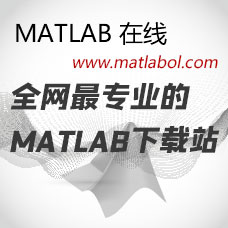自适应信号处理(沈福民).pdf
代码说明:
研究生自适应信号处理课程用书 信号与信息处理专业研究生系列教材自适应信号处理沈福民编著西安电子科技大学出版社2001内容简介木书主要介绍自适应信号处理的基本理论、基本电路与系统的性能和应用以及近年来的新进展。全书共分10章,在第三、四、五、六章中,着重分析和讨论自适应基本准则和自适应主要算法;为了便于理解和掌握自适应的基本理论,在本书的第一、二章中介绍了有关自适应及自适应信号处理的基本概念,发展概况和有关的基础知识;自第七章后,特别增加了关于自适应信号处理基本电路与系统的性能和应用方面的内容。本书可作为通信、电子信息工程专业及其他相关专业大学高年级学生和研究生的教科书,也可以作为从事自适应信号处理研究领域工程技术人员的自学用书。图书在版编目CIP)数据自适应信号处理/沈福民编著.一西安:西安电子科技大学出版社,2001.3研究生系列教材ISBN7-5606-0979-11.自…Ⅱ.沈…Ⅱ.自适应通信系统一信号处理一研究生一教材Ⅳ,TN914中国版本图书馆CIP数据核字(2000第82675号责任编辑夏大平出版发行西安电子科技大学出版社(西安市太白南路2号)电话(029)8227828邮编710071http://www.xduph.comE-mail: xdupfxb@ pub. xaonline com经销新华书店印刷西安市第三印刷厂版次2001年3月第1版2001年3月第1次印刷开本787毫米×1092毫米1/16印张14.625字数341千字印数1~4000册定价16.00元ISBN7-5606-0979-1/TN·0170*如有印装问题可调换**本书封面贴有西安电子科技大学出版社的激光防你标志,无标志者不得锵售。前言随着信号处理学科领域理论与技术的迅速发展,自适应信号处理作为一门新的学科分支应运而生,并在诸如通信、雷达、工业控制、地震勘探及生物医学电子学等领戎获得愈来愈广泛的应用。近儿十年来,在自适应信号处理的理论、方法与应用技术方面的研究己取得了丰硕成果,与之相关的研究文献及论著也不断问世。然而,作为适合该学科领域研究生教学与培养专业技术人才的教科书数量甚少,特别在我国还未见到。这就很难满足实际教学及科研工作的迫切需要。本书的编写旨在弥补在自适应信号处理理论、方法与应用技术的学习及研究之中教材的不足。全书以“自适应性能测度”、“自适应算法”等基本現论的介绍分析及应用方面的讨论贯穿前后各章内容。全书共分10章,其主要内容可概括如下:1.随机信号与信号矩阵理论(第一、二章):为便于初学者入门,在本书前面增加了有关自适应信号处理理论学习必备知识方面的内容。2.性能测度与性能表面搜索(第三、四章):这是自适应信号处理全部理论的核心思想与基本出发点,由此可推导出冬种形式的自适应基本算法和相应的改进算法。3.基本自适应算法与适于不同应用情况下的自适应改进算法(第五、六章):这是本书最重要的内容,它体现了自适应信号处理理论与技术发展的方向与水平。本书除介绍较早期的研究成果和基本理论外,同玗关注近年来取得的新成果。4.自适应模拟与逆模拟,自适应于扰对消与自逅应预测滤波电路〔第七、八章):主要分析了它们的基本原理和有针对性地介绍了它们的实际应用。5.自适应阵列与自适应波束形成(第九章):较详细地介绍了阵列波束形成的一般原理、旁瓣对消器和各种自适应波束形成器及它们的应用。6.自适应控制(第十章):这涉及到一个专门的学科领域,但本书主要想使读者了解和掌握自适应信号处理理论与技术在该领域的应用情况,并不想全面深入地研究整个领域。读者应当从以下几个方面把握本书的主要特色:1.较全面地集中介绍了自适应信号处理的基本理论与方法。2.为了不使学生的学习仅仅停留在比绞抽象的理论之上,在本书中特别用较多的篇幅介绍了各种自适应算法在多个学科领域内的应用(其中包括对各种不同自适应电路与系统的分析),但主要侧重于通信、雷达及阵列信号处理等方面的实际应用。3.基于对复随机信号(或复确知信号)的自适应信号处理理论,从而使研究更具普遍性,本书的研究内容不仅针对复信号,而且也同样包含了(适合)实信号。本书是在作者参加科研工作及承担本课程的多年研究生教学工作基础上编写完成的,因而较多地考虑到了教学工作中的实际要求和一般有关专业人员的自学需要。但是,由于本学科的发展十分迅速,本书对有些近年来才获得的新成果还不能满意地介绍给大家,加之作者水平所限,书肀难免有错误与不当之处,敬请广大读者谅解并不吝赐教。淸华大学张贤达教授在百忙之中对书稿进行了认真审阅,并对书稿提出了十分宝贵的修改意见,在此深表感谢。本书的编写与出版工作得到了西安电子科技大学教材建设基金和研究生教材建设基金的专项资助,在此也特表感谢。沈福民2000年9月于西安电子科技大学目录第一章概论1.1主要研究领域1.2发展和应用………自。·鲁音◆◆◆··鲁···4●音●·●鲁命鲁鲁·鲁非●●命21.3章节内容安排第二章信号矩阵理论2.1信号、信号向量与权向量…2.2输入信号的相关矩阵……2.3信号子空间和噪声子空间…457◆··●●鲁鲁●●●。●●鲁鲁·啁●·晋●··番·。鲁自·鲁●。。·●·●●曹春鲁鲁●·鲁布·自。。●垂●·●b曹2.4梯度运算··鲁音自·普p·自自●非●·看自鲁。鲁自●●●鲁·非奇自·晋带●··●鲁自4音●●·q●非ψ●●鲁●●·音●·●●山◆。鲁鲁●鲁●·第三章性能测量方法3.1均方误差(MSE)性能测度……………………………………………………113.2最大信噪比(MSN)性能测度……………●·●●·●●···普●命●垂●●命·自曹鲁●·鲁●音备3.3最大似然(ML)性能测度…183.4最小噪声方差(MV)性能测度19习题…………………………………………………………………21第四章性能表面的搜索4.1最速下降法梯度搜索……………………………………224.2牛顿法梯度搜索·音音鲁●。◆.鲁●···●●···命命……264,3梯度估值及其对自适应过程的影响●带●P。鲁●30习题……………ss46第五章基本自适应算法5.1LMS算法485.2序贯回归(SER)算法……………………………………563RLS算法………………625.4随机搜索算法…665.5直接矩阵求逆(DMI法…………………………………………7习题···鲁鲁鲁看··非●··甲垂●电●75第六章自适应算法的改进形式6.1约束LMS算法………………………………776.2自适应递归滤波器…………………………………816.3自适应格型滤波器…866.4用正交信号的自适应滤波…986.5解相关LMS算法…鲁●·●·自曹D曹看垂备春●咖↓◆事●4l046.6一种新的拟牛顿自适应滤波算法……………………………………106习题…………………………108第七章自适应模拟与逆模拟7.1概述………………………………………………………………………1117.2多径通信信道的自适应模拟……ss…ss1147.3FIR滤波器综合的自适应模拟……………………………………118电话信道的自适应均衡…………………………………………………1217.5雪达信道的自适应均衡………1247.6IR滤波器自适应综合125习题………130第八章自适应干扰对消8.1概述………13682单信道噪声对消器…………………………………1378.3用作陷波滤波器的自适应干扰对消器1448.4自适应预测器的几种应用…147具有多参考输入的噪声对消……………………153习题…………………………辛鲁垂●垂鲁·。·●154第九章自适应阵列与自适应波束形成9.1阵列波束形成的基本原理……………………1579.2自适应天线旁瓣对消……………………………1619.3采用引导信号的波束形成…………1689.4格里菲思LMS波束形成器………………………………………1769.5弗罗斯特自适应波束形成器…………:1789.6具有零点和极点的自适应波束形成器………1829.7杜瓦尔自适应波束形成器……………………………………1849.8跳频扩谱技术…●香●鲁鲁●鲁命p●鲁垂…ss1879.9超分辨波束形成…89习题195第十章自适应控制系统10.1白适应控制的基本概念…………………………………19910.2自适应模型控制(AMC)……………………………………,20210.3自适应逆控制…………………20410.4被控系统噪声及过滤后ⅹ-LMS算法………●●·◆····哥··。··音非自··。·。●;·●·●20710.5模型参考自适应控制●●◆鲁·◆··昏··自曹●辛●香●非●音··●●。自。鲁音非·●D●◆自····昏·番209习题…●鲁。鲁211附录附录A信号复包络表示◆…·214附录B有用的矩阵关系和施瓦茨不等式……………216附录C多变量的高斯分析………………………………….217C.1实高斯随机向量…………218C.2复高斯随机向量···●···P··。●·········:·;s··s;s·s.saa219参考文献鲁·●···章……………………………222第一章概论自适应信号处理( Adaptive Signal Processing)是近40年来发展起来的信号处理领域一个新的分支。随着人们在该领域研究的不断深入,自适应信号处理的理论和技术日趋完善,其应用的范围也愈来愈广泛通过信号和信号的传送,人们可以获取(有用)信息,而经对信号进行处理使蕴含于信号中的(有用)信息提取出来。由于信号形式及信号传送方式和传送环境的复杂性(例如信号在传送过程中受到噪声和干扰的污染等),促使信号处理理论和技术不断发展,从而使人们更有效地、最大可能地获取信息。1.1主要研究领域自适应信号处理是研究一类结构可变或可以调整的系统,它可以通过自身与外界环境的接触来改善自身对信号处理的性能。通常这类系统是时变的非线性系统,可以自动适应(即“自适应”)信号传送变化的环境和要求,无须详细知道信号的结构和信号的实际知识无须精确设计信号处理系统本身。自适应系统( Adaptive System)的非线性特性主要是由系统对不同信号环境实现自身调整确定的。假如一个自适应滤波器( Adaptive Filter)的输入仅为有用信号,那么,它可以是个全通滤波器,但若输入为有用信号加噪声(或干扰),则可成为一个带通或带阻滤波器。自适应系统的时变特性主要是由其自适应响应(自适应“学习”)过程确定的。当自适应过程结束,系统调整不再进行时,有一类自适应系统可成为线性系统,并称为“线性自适应系统”( Linear Adaptive system)。因便于设计并易于作数学处理,这类自适应系统特别有用。自适应系统和一般系统类似,可以分为开环自适应和闭环自适应两种类型。开环自适应系统的工作主要为:对输入信号或信号环境进行测量,并用测量得到的信息形成公式或算法( Algorithm),用以调整自适应系统自身;而闭环自适应系统还利用系统调整所得纬果的有关知识去优化系统某种性能,即该类系统是一种带“性能反馈”的自适应系统。图1.1(a)表示一个开环自适应系统,控制该系统的自适应算法仅由输入确定。图1.1(b)则表示一个闭环自适应系统,控制该系统相应的自适应算法除取决于输入外,同时还依赖于系统输出的结果自适应信号处理所研究的信号既可以是随机平稳信号,也可以是局部平稳的随机信号。在大量的工程应用和研究中,又将信号在频率域分成窄带和宽带两种,在两种情况下研究或处理的方法及自适应系统的结构也不同。信号的统计量极其重要。人们最常用的统
下载说明:请别用迅雷下载,失败请重下,重下不扣分!


